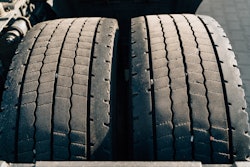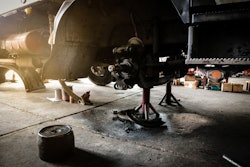CCJ does an excellent job of reporting on fleet innovators.
Most of us love the concept of innovation, but implementing change – the real innovation – now, that is the rub.
I have been involved in many trucking industry innovations – water filters to extend cooling system life, turbochargers when 90% of engines were naturally aspirated, fan clutches, and air ride seats. All great ideas, but each took a sales and marketing team to sell them. Unfortunately, the world still does not beat a path to your door unless you are Apple.
CCJ just featured Regional Express Carriers as an Innovator. It is an excellent article, and should be read by every fleet manager in the U.S., but the thing about innovation is that it is always on the cutting edge. If the innovation can be patented, then it might be kept a secret to prevent unscrupulous people from filing for a patent before the original inventor files his patent claim.
As an industry advisor to Auburn University’s Transportation Institute, I am on the cutting edge of what is aptly described in the article as: “…intelligence-driven, real-time supply chain visibility and risk-management technology provider…” The CCJ article just primed the information pump for what is coming down the road in the way of innovation, and Auburn University is right in the middle of the future.
We are using an Artificial Intelligence (AI) platform that is built exclusively for vehicles. The hardware uses edge computing technology, has its own hard drive with extensive storage and can interface with any camera system on the market. The software comes with built-in driver scoring, risk management, GPS and ELD. The system reads everything on the CAN bus and uses AI and machine learning to analyze vehicle and driver data to provide management with actionable intelligence on the entire system.
After I learned about the Tangerine product, my first thought was to approach Auburn on using the platform as a basis for developing a new model for fuel economy testing for their fleet of trucks. We currently have a grad student reviewing the SAE/TMC Type II, Type III and Type IV fuel economy protocols to develop a Type V system that uses the current fleet’s duty cycle. In other words, inexpensive fuel economy testing comparing a control truck to a test truck should be available to the trucking industry by next year at PaveTrack.com.
But unlike many systems that are reading the CAN bus, the Tangerine AI team prides itself on the fact that its platform can read any sensor. It doesn’t have to be on the CAN bus, but any sensor.
Having spent many years functioning as a field service engineer doing root cause failure analysis on fan clutches, I suggested to my team at Auburn that we put an air pressure sensor between the fan clutch solenoid and the fan clutch so could we predict a fan clutch failure. The team's response? “Let’s see.”
So at this writing we have five Engineering Design seniors integrating a TE Connectivity PSI sensor with a Kit Masters fan clutch. The data reported by the system to management can prevent a road failure of a fan clutch, saving thousands of dollars and maintaining uptime.
Counteract Balancing Beads, a sponsor of my research projects at Auburn, asked me to look into how we could use AI and some sort of wheel end sensor to predict when tire and wheels might come off tractor trailers. Starting this semester, a second team of five Engineering Design seniors will be doing a couple of key experiments: One experiment is to see if a shock absorber gets extremely hot during a tire or wheel coming off a vehicle. A heat sensor talking to the AI system might give enough notice of a wheel-off event if the shock absorber undergoes a heat spike during failure, warning the driver to stop the truck.
The key to innovation is to not get locked into one way of solving a problem, so the team will be examining other methods of detecting wheel end failure modes, like vibration.
As some of the CCJ readers know, I write and share my opinions extensively on LinkedIn. A few weeks ago I put out a teaser post to see if I could get more industry support for my current Auburn projects. I am proud to say Gabriel North America joined the organizing Zoom call and offered support for the project. I am in talks with SAF-Holland to see if they will also support the project.
A question the readers of CCJ readers: What kind of sensor could be placed in a truck system that could help a fleet manager predict the future? Please share your answer with me when you can. It could become a R&D project at Auburn.
Bob Rutherford is a 50-year veteran of the trucking industry. Thirty of those years were as a member of the TMC where he earned both the Silver Spark Plug and Recognized Associate awards for his contributions to the industry. He currently is an industry advisor to Auburn University’s Transportation Institute working with student engineers on tomorrow’s solutions.












